|
Books Should Be Free Loyal Books Free Public Domain Audiobooks & eBook Downloads |
|
|
Books Should Be Free Loyal Books Free Public Domain Audiobooks & eBook Downloads |
|
History Books |
|---|
|
Book type:
Sort by:
View by:
|
By: Francis Parkman, Jr. (1823-1893) | |
|---|---|
 Conspiracy of Pontiac and the Indian War after the Conquest of Canada
Conspiracy of Pontiac and the Indian War after the Conquest of Canada
"The Conspiracy of Pontiac" was Parkman's first history book and first published in 1851. It covers the Indian wars of 1763 to 1769. Pontiac, an Ottawa chief, put together a coalition of Indian tribes from around the Great Lakes region and the Illinois and Ohio Countries to attack the British under General Jeffrey Amherst. - Summary by Richard Carpenter | |
 La Salle, Discovery of The Great West
La Salle, Discovery of The Great West
Parkman has been hailed as one of America's first great historians and as a master of narrative history. Numerous translations have spread the books around the world. The American writer and literary critic Edmund Wilson in his book O Canada , described Parkman’s France and England in North America in these terms: The clarity, the momentum and the color of the first volumes of Parkman’s narrative are among the most brilliant achievements of the writing of history as an art. Parkman's biases, particularly his attitudes about nationality, race, and especially Native Americans, has generated criticism... | |
By: Francis Rolt-Wheeler | |
|---|---|
 The Boy With the U.S. Census
The Boy With the U.S. Census
THE BOY WITH THE U.S. CENSUSBY FRANCIS ROLT-WHEELERPREFACELife in America to-day is adventurous and thrilling to the core. Border warfare of the most primitive type still is waged in mountain fastnesses, the darkest pages in the annals of crime now are being written, piracy has but changed its scene of operations from the sea to the land, smugglers ply a busy trade, and from their factory prisons a hundred thousand children cry aloud for rescue. The flame of Crusade sweeps over the land and the call for volunteers is abroad... | |
By: Francis Tiffany (1827-1908) | |
|---|---|
 Life of Dorothea Lynde Dix
Life of Dorothea Lynde Dix
A biography of a woman who advocated for the humane treatment of people with mental illness. As a young woman travelling overseas, Dorothea Dix met with people who were interested in reforming how the mentally ill were treated. Returning to America, she pushed for changes and proper care for these individuals, meeting with strong resistance. Her work ultimately resulted in social reform and the creation of asylums. Dorothea Dix was a tireless crusader and instrumental in important social reforms in the United States and the world. - Summary by Phyllis Vincelli | |
By: Francis Whiting Halsey (1851-1919) | |
|---|---|
 Great Epochs in American History, Volume III
Great Epochs in American History, Volume III
This is the third volume in ten volume series of great epochs in the history of the United States, from the landing of Columbus to the building of the Panama Canal. In large part, events composing each epoch are described by men who participated in them, or were personal eye-witnesses of them. Volume III describes the French war and the Revolution and covers time period from 1745 to 1782. - Summary by Kikisaulite | |
By: François Norbert Blanchet (1795-1883) | |
|---|---|
 Historical Sketches of the Catholic Church in Oregon, During the Past Forty Years
Historical Sketches of the Catholic Church in Oregon, During the Past Forty Years
This book is a first-hand account of the experiences of Fr. Norbert Blanchet and his fellow missionaries to Oregon in the 1830’s and 1840’s. The original duo, Fr. Blanchet and Fr. Demers, had incredible adventures traveling across Canada by canoe, horseback, and river raft to arrive at the Hudson’s Bay Company Fort at Vancouver, Washington. From there, they energetically and joyfully established churches in the Willamette valley, along the Columbia River, and into present day Washington state and British Columbia... | |
By: François Pierre Guillaume Guizot (1787-1874) | |
|---|---|
 Popular History of England, From the Earliest Times to the Reign of Queen Victoria, Vol 1
Popular History of England, From the Earliest Times to the Reign of Queen Victoria, Vol 1
This is volume one in this series of books and deals with history from Caractacus and his Wife before Claudius to the death of Wat Tyler. This follows the history of that time. Volumes two and three will be done once this one is complete. | |
By: Frank Berkeley Smith (1869-1931) | |
|---|---|
 Real Latin Quarter
Real Latin Quarter
"Cocher, drive to the rue Falguière"--this in my best restaurant French. The man with the varnished hat shrugged his shoulders, and raised his eyebrows in doubt. He evidently had never heard of the rue Falguière. "Yes, rue Falguière, the old rue des Fourneaux," I continued. Cabby's face broke out into a smile. "Ah, oui, oui, le Quartier Latin." And it was at the end of this crooked street, through a lane that led into a half court flanked by a row of studio buildings, and up one pair of dingy waxed steps, that I found a door bearing the name of the author of the following pages--his visiting card impaled on a tack... | |
By: Frank Henderson | |
|---|---|
 Six Years in the Prisons of England
Six Years in the Prisons of England
A Merchant talks about daily life inside prisons of England, describes routines and how prisoners are treated. He notes stories of how fellow prisoners came to be in prison, and his ideas about the penal system, its downfalls and ways to improve it. The reader can see similarities to the problems we still have in regarding "criminals" today. (Introduction by Elaine Webb) | |
By: Frank Lewis Dyer and Thomas Commerford Martin | |
|---|---|
 Edison, His Life and Inventions
Edison, His Life and Inventions
One of the most prolific and multi-talented geniuses the world has ever seen, Thomas Alva Edison's life is indeed an inspiration for each new generation. Today we live in a world that would not have been possible if not for several of his important inventions – the electric light bulb, the motion picture camera, electric power distribution, the phonograph, and a host of other things that we take for granted today. In fact, he still holds the world record for the maximum number of patents, numbering 1093 in all! Edison – His Life and Inventions by Frank Lewis Dyer and Thomas Commerford Martin, published in 1910 was in fact a biography commissioned by Edison himself... | |
By: Frank Mundell (1870-1932) | |
|---|---|
 Stories of the Lifeboat
Stories of the Lifeboat
There's fury in the tempest, And there's madness in the waves; The lightning snake coils round the foam, The headlong thunder raves; Yet a boat is on the waters, Filled with Britain's daring sons, Who pull like lions out to sea, And count the minute guns. Rescue attempts to save the lives of stranded and imperilled sailors and seafarers have undoubtedly been occurring ever since the very first time that man sailed on a floating object away from the safety of the shore and out onto the wild and unpredictable seas of the world... | |
 Stories of the Royal Humane Society
Stories of the Royal Humane Society
Established in 1774, the ‘Society for the Recovery of Persons Apparently Drowned’ published information on how to save people from drowning, promoted the concept of using methods of artificial resuscitation to attempt to revive victims who had appeared to have lost their life through drowning and rewarded those people who had saved a life. Under the royal patronage of King George the Third, the Society changed its name in 1787 to ‘The Royal Humane Society’ and this organisation still exists... | |
 Stories of North Pole Adventure
Stories of North Pole Adventure
This volume does not pretend to be a history of Artic exploration. My aim has been to narrate some of the most thrilling incidents of Polar adventure in such a manner that the reader may feel something of the fascination which induces explorers, in spite of reverses and disasters, to attempt again and again to penetrate the vast region of snow and silence and solitude around the North Pole. Great care has been taken to ensure accuracy; and, wherever possible, the actual journals of the various expeditions have been consulted, besides a host of minor publications... | |
By: Frank R. Stockton (1834-1902) | |
|---|---|
 Buccaneers and Pirates of Our Coasts
Buccaneers and Pirates of Our Coasts
Buccaneers and Pirates of our Coasts is a non-fiction, rolicking story of the origins of piracy and of the famous pirates of the coasts of the United States. The stories don’t cast pirates in the glowing light of modern day renditions – in Stockton’s stories, pirates are bad guys! – but the dramatic style makes them good fun to read, anyway! (Summary by Sibella Denton) | |
By: Frank Richard Stockton | |
|---|---|
 Round-about Rambles
Round-about Rambles
ROUND-ABOUT RAMBLES, In Lands of FACT AND FANCYBY FRANK R STOCKTONPREFACECome along, boys and girls! We are off on our rambles. But please do not ask me where we are going. It would delay us very much if I should postpone our start until I had drawn you a map of the route, with all the stopping-places set down. We have far to go, and a great many things to see, and it may be that some of you will be very tired before we get through. If so, I shall be sorry; but it will be a comfort to think that none of us need go any farther than we choose... | |
By: Frank Webb (1828-1894) | |
|---|---|
 Garies and their Friends
Garies and their Friends
The book which now appears before the public may be of interest in relation to a question which the late agitation of the subject of slavery has raised in many thoughtful minds, viz. — Are the race at present held as slaves capable of freedom, self-government, and progress. The author is a coloured young man, born and reared in the city of Philadelphia. This city, standing as it does on the frontier between free and slave territory, has accumulated naturally a large population of the mixed and African race... | |
By: Frederick Adams Woods (1873-1939) | |
|---|---|
 Influence of Monarchs
Influence of Monarchs
Frederick Adams Woods presents compelling evidence to support the great man theory of history and his own category scientific inquiry known as historiometry, or the study of history. In this work, the summarised history of fourteen European nations that have achieved renown at some point in their recorded timeline is compared to the biography of their monarchs and demonstrates the strong link between the intellect and willpower of the supreme leadership and the condition of their country. - Summary by Leon Harvey | |
By: Frederick Davis Greene (1853-1940) | |
|---|---|
 Armenian Crisis in Turkey
Armenian Crisis in Turkey
Frederick Greene shows in this book that the case of the subject races in the Ottoman Empire is desperate, that there is no hope of reform from within, and that relief vimust therefore come through the interference of the powers of Europe. Their action depends largely on the support of the public. “Public opinion,” therefore, “must be brought to bear upon this case,” as Mr. Gladstone said in the House of Commons six years ago. Since then there has been added a new chapter of horrors, and the demand for decisive action in the name of our common humanity has become more urgent... | |
By: Frederick Douglass (1818-1895) | |
|---|---|
 Narrative of the Life of Frederick Douglass
Narrative of the Life of Frederick Douglass
Frederick Douglass was born into slavery on a Maryland plantation. He faced hardship as a child, but later encountered owners who were relatively liberal and allowed him to learn to read, write and be in contact with freed slaves. At the age of 20, he escaped from the plantation and made his way to New York. Though he remained a fugitive, he married and changed his name to avoid being caught. He continued his education and became involved in the Abolitionist Movement. He began touring the country, speaking passionately about the unjust, cruel and inhuman practice of slavery... | |
By: Frederick Herman Tilberg (1895-1979) | |
|---|---|
 Antietam National Battlefield, Maryland
Antietam National Battlefield, Maryland
The American Civil War battle at Antietam, Maryland, on 17 September 1862, has been called the bloodiest day of that conflict. Confederate General Lee’s invasion of the North was repulsed, and when the fighting ended, the course of the Civil War had been greatly altered. This victory by the North moved President Abraham Lincoln to issue The Emancipation Proclamation, freeing all slaves in states then in rebellion against the Union. This 1960 publication is number 31 in the Historical Handbook series put out by the U... | |
 Gettysburg National Military Park, Pennsylvania
Gettysburg National Military Park, Pennsylvania
On the gently rolling farm lands surrounding the little town of Gettysburg, Pa., was fought one of the great decisive battles of American history. For 3 days, from July 1 to 3, 1863, a gigantic struggle between 75,000 Confederates and 88,000 Union troops raged about the town and left 51,000 casualties in its wake. Heroic deeds were numerous on both sides, climaxed by the famed Confederate assault on July 3 which has become known throughout the world as Pickett’s Charge. The Union victory gained on these fields ended the last Confederate invasion of the North and marked the beginning of a gradual decline in Southern military power... | |
By: Frederick Litchfield | |
|---|---|
 Illustrated History of Furniture
Illustrated History of Furniture
From the Earliest to the Present TimeBy Frederick Litchfield.PREFACE.In the following pages the Author has placed before the reader an account of the changes in the design of Decorative Furniture and Woodwork, from the earliest period of which we have any reliable or certain record until the present time. A careful selection of illustrations has been made from examples of established authenticity, the majority of which are to be seen, either in the Museums to which reference is made, or by permission of the owners; and the representations of the different interiors will convey an idea of the character and disposition of the furniture of the periods to which they refer... | |
By: Frederick Marryat (1792-1848) | |
|---|---|
 The Children of the New Forest
The Children of the New Forest
The children of Colonel Beverley, a Cavalier officer killed at the Battle of Naseby are believed to have died in the flames when their house, Arnwood, is burned by Roundhead soldiers. However, they escape and are raised by Joseph Armitage, a gamekeeper in his cottage in the New Forest. The story describes how the children adapt from anaristocratic lifestyle to that of simple cottagers. The children are concealed as the grandchildren of Armitage. Eventually after Armitage’s death, Edward Beverley leaves and works as a secretary for the sympathetic Puritan placed in charge of the Royal land in the New Forest... | |
 Mr. Midshipman Easy
Mr. Midshipman Easy
One of the first novel-length pieces of nautical fiction, MR. MIDSHIPMAN EASY (1836) is a funny and easygoing account of the adventures of Jack Easy, a son of privilege who joins the Royal Navy. The work begins as a satire on Jack’s attachment to “the rights of man” that may try the listener’s patience. But despair not, for the story soon settles down as the philosophical midshipman begins his many triumphs over bullies, foul weather, and various damned foreigners of murderous intent.Caveat audiens: This novel employs racial/ethnic epithets and religious stereotypes, as well as taking a rather sunny view of supply-side economics... | |
 Jacob Faithful
Jacob Faithful
Rebelling against the career chosen for him by his wealthy family, Frederic Marryat joined the Royal Navy in 1806 at the age of 14. He first served as a midshipman in the 38-gun frigate "HMS Imperieuse" commanded by Lord Cochran, 10th Earl of Dundonald whose real life exploits were used by Marryat in his fiction and which formed the basis for other famous fictional characters like Horatio Hornblower and Jack Aubrey. Having survived more than 50 sea battles and attained the rank of Post Captain, he resigned from the Navy and devoted the rest of his life to writing, drawing a good deal on his distinguished career in the Navy and is now considered the Father of Modern Nautical Fiction... | |
 Naval Officer, or Scenes in the Life and Adventures of Frank Mildmay
Naval Officer, or Scenes in the Life and Adventures of Frank Mildmay
Marryat was a midshipman under Captain Cochrane and this, his first naval adventure, is considered to be a highly autobiographical telling of his adventures with one of Britain's most famous and daring naval captains. | |
By: Frederick Whymper (1838-1901) | |
|---|---|
 Sea: Its Stirring Story of Adventure, Peril, & Heroism. Volume 1
Sea: Its Stirring Story of Adventure, Peril, & Heroism. Volume 1
Everything about the sea: history of ships, famous mariners and life on shipboard, adventure, shipwrecks and daring rescues. - Summary by Kikisaulite | |
By: Frederick Winthrop Hutchinson | |
|---|---|
 Men Who Found America
Men Who Found America
This Book is about the Men Who Found America and how it started - Summary by Elijah | |
By: Fridtjof Nansen (1861-1930) | |
|---|---|
 Farthest North
Farthest North
Being the Record of a Voyage of Exploration of the Ship "Fram", 1893-96 and of a Fifteen Months' Sleigh Journey by Dr. Nansen and Lieut. Johansen / by Fridtjof Nansen; with an Appendix by Otto Sverdrup | |
 Norway and the Union with Sweden
Norway and the Union with Sweden
A History of the politics surrounding The Union of Norway with Sweden, from 1814-1905, from the Norwegian perspective - Summary by Ærik Bjørnsson | |
By: Friedrich Engels (1820-1895) | |
|---|---|
 Condition of the Working-Class in England in 1844
Condition of the Working-Class in England in 1844
This is Engels' first book (since considered a classic account of England's working class in the industrial age), which argues that workers paid a heavy price for the industrial revolution that swept the country. Engels wrote the piece while staying in Manchester from 1842 to 1844, based on th bohis observations and several contemporary reports conducted over the period. | |
By: Friedrich Nietzsche (1844-1900) | |
|---|---|
 Case of Wagner / Nietzsche Contra Wagner / Selected Aphorisms
Case of Wagner / Nietzsche Contra Wagner / Selected Aphorisms
A collection of three of Nietzsche's writings concerning the music of Wagner. In particular, he relates Wagner's music as degenerate, unrefined and unintelligent and relates it to a gradually degenerating German culture and society. The translator provides a detailed introduction. | |
 Human, All Too Human: A Book For Free Spirits, Part I
Human, All Too Human: A Book For Free Spirits, Part I
"Human, all-too-Human, is the monument of a crisis. It is entitled: 'A book for free spirits,' and almost every line in it represents a victory—in its pages I freed myself from everything foreign to my real nature. Idealism is foreign to me: the title says, 'Where you see ideal things, I see things which are only—human alas! all-too-human!' I know man better—the term 'free spirit' must here be understood in no other sense than this: a freed man, who has once more taken possession of himself." | |
 Beyond Good and Evil: Prelude to a Philosophy of the Future (Version 2)
Beyond Good and Evil: Prelude to a Philosophy of the Future (Version 2)
By turns illuminating, infuriating, bewildering, and amusing, Nietzsche's masterwork covers a lot of ground. He rejects most strands of Western thought, especially on the subject of morality, and develops his own theme demanding that individuals embrace their own 'will to power' to give life intention and direction. First published in German in 1887, this translation was produced in 1907 by Helen Zimmern, a long-standing acquaintance of Nietzsche.There is an accessible text at http://www.gutenberg.org/ebooks/4363 but it leaves out all words in Greek, and is not in alignment with any printed edition; hence using the archive.org version. - Summary by Cori Samuel | |
 Birth of Tragedy
Birth of Tragedy
In this famous early work of German philosopher Friedrich Nietzsche, he investigates the artistic characteristics of Apollonian and Dionysian characteristics in Greek art, specifically in Greek tragedy as it evolved. Then he applies his conclusions about Greek tragedy to the state of modern art, especially modern German art and specifically to the operas of Richard Wagner. | |
 Early Greek Philosophy & Other Essays (Version 2)
Early Greek Philosophy & Other Essays (Version 2)
“The essays contained in this volume treat of various subjects. With the exception of perhaps one we must consider all these papers as fragments. Written during the early Seventies, and intended mostly as prefaces, they are extremely interesting, since traces of Nietzsche's later tenets—like Slave and Master morality, the Superman—can be found everywhere. But they are also very valuable on account of the young philosopher's daring and able handling of difficult and abstruse subjects. "Truth and Falsity," and "The Greek Woman" are probably the two essays which will prove most attractive to the average reader.” - Summary by Maximilian Mügge, Translator | |
By: Friedrich Schiller | |
|---|---|
 The Thirty Years War
The Thirty Years War
The History of the Thirty Years War is a five volume work, which followed his very successful History of the Revolt of the Netherlands. Written for a wider audience than Revolt, it is a vivid history, colored by Schiller’s own interest in the question of human freedom and his rationalist optimism. Volume 1 covers the background of the war, through the Battle of Prague in late 1620. (Introduction by Alan Winterrowd) | |
 Mary Stuart
Mary Stuart
Schiller's tragedy depicts the final days of Mary, Queen of Scots, who has been imprisoned by her cousin, Queen Elizabeth I, because of her potential claim on the English throne. The action of the play revolves around an attempt to rescue Mary from prison and Elizabeth's indecision over whether or not to have her executed. The 1801 translation is by Joseph Mellish, a friend of Schiller's. | |
By: Fritz Kreisler | |
|---|---|
 Four Weeks in the Trenches
Four Weeks in the Trenches
A brief record of the fighting on the Eastern front in the great war by a participant in that great and terrible conflict | |
By: G. F. Young (1846-1919) | |
|---|---|
 Medici, Volume 1
Medici, Volume 1
This work relates the history of the Medici family through three centuries and eleven generations, from its rise from obscurity, to its zenith of power and influence, to its eventual decay and ruin. It outlines their history in conjunction with the major events of Europe and dwells much on the artists and artworks patronized by the Medici - the impetus of the Renaissance. This first volume brings to life the Renaissance and how Florence, through the Medici, was the epicentre of the movement that spread new learning throughout Europe... | |
 Medici, Volume 2
Medici, Volume 2
This work relates the history of the Medici family through three centuries and eleven generations, from its rise from obscurity, to its zenith of power and influence, to its eventual decay and ruin. It outlines their history in conjunction with the major events of Europe and dwells much on the artists and artworks patronized by the Medici - the impetus of the Renaissance. This second volume begins in 1537 and highlights Catherine, the last of the elder branch, then follows the younger branch to the eventual extinction of the family in 1743. - Summary by TriciaG | |
By: G. K. Chesterton | |
|---|---|
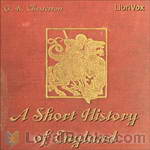 A Short History of England
A Short History of England
Gilbert Keith Chesterton was a prolific writer on many topics. His views of history were always from the standpoint of men and their interactions, and it may fairly be said he saw all of history as a battle between civilization and barbarism. So it has always been, and that remains true even today.“But it is especially in the matter of the Middle Ages that the popular histories trample upon the popular traditions. In this respect there is an almost comic contrast between the general information... | |
 Orthodoxy
Orthodoxy
Orthodoxy is a book that has become a classic of Christian apologetics. In the book's preface Chesterton states the purpose is to "attempt an explanation, not of whether the Christian faith can be believed, but of how he personally has come to believe it." In it, Chesterton presents an original view of the Christian religion. He sees it as the answer to natural human needs, the "answer to a riddle" in his own words, and not simply as an arbitrary truth received from somewhere outside the boundaries of human experience. | |
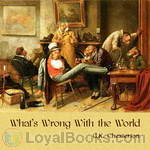 What's Wrong With the World
What's Wrong With the World
Gilbert Keith Chesterton (1874–1936) has been called the “prince of paradox.” Time magazine observed of his writing style: “Whenever possible Chesterton made his points with popular sayings, proverbs, allegories—first carefully turning them inside out.” His prolific and diverse output included journalism, philosophy, poetry, biography, Christian apologetics, fantasy and detective fiction. The title of Chesteron’s 1910 collection of essays was inspired by a title given to him two years earlier by The Times newspaper, which had asked a number of authors to write on the topic: “What’s wrong with the world?”... | |
 The Ballad of the White Horse
The Ballad of the White Horse
An English epic poem that follows the exploits of Alfred the Great in his defense of Christian civilization in England from the heathen nihilism of the North. Following a string of defeats at the hands of the invading Danes, a vision from heaven in the river island of Athelney fills Alfred with joy and hope. Though it gives no promise of victory in the coming struggle, it inspires him to rally his chieftains for a last stand against the invading hordes. His adventures lead throughout the country... | |
 What I Saw in America
What I Saw in America
“Let me begin my American impressions with two impressions I had before I went to America. One was an incident and the other an idea; and when taken together they illustrate the attitude I mean. The first principle is that nobody should be ashamed of thinking a thing funny because it is foreign; the second is that he should be ashamed of thinking it wrong because it is funny.” (Gilbert Keith Chesterton) | |
 The New Jerusalem
The New Jerusalem
“On the road to Cairo one may see twenty groups exactly like that of the Holy Family in the pictures of the Flight into Egypt; with only one difference. The man is riding on the ass.” “The real mistake of the Muslims is something much more modern in its application than any particular passing persecution of Christians as such. It lay in the very fact that they did think they had a simpler and saner sort of Christianity, as do many modern Christians. They thought it could be made universal merely by being made uninteresting... | |
 A Utopia of Usurers
A Utopia of Usurers
“Now I have said again and again (and I shall continue to say again and again on all the most inappropriate occasions) that we must hit Capitalism, and hit it hard, for the plain and definite reason that it is growing stronger. Most of the excuses which serve the capitalists as masks are, of course, the excuses of hypocrites. They lie when they claim philanthropy; they no more feel any particular love of men than Albu felt an affection for Chinamen. They lie when they say they have reached their position through their own organising ability... | |
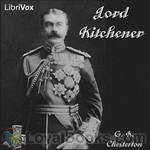 Lord Kitchener
Lord Kitchener
“The paradox of all this part of his life lies in this–that, destined as he was to be the greatest enemy of Mahomedanism, he was quite exceptionally a friend of Mahomedans.” | |
By: Gaius Julius Caesar | |
|---|---|
 Commentaries on the Gallic War
Commentaries on the Gallic War
Commentarii de Bello Gallico (English: Commentaries on the Gallic War) is Julius Caesar's firsthand account of the Gallic Wars, written as a third-person narrative. In it Caesar describes the battles and intrigues that took place in the nine years he spent fighting local armies in Gaul that opposed Roman domination.The work has been a mainstay in the teaching of Latin to schoolchildren, its simple, direct prose lending itself to that purpose. It begins with the frequently quoted phrase "Gallia est omnis divisa in partes tres", sometimes quoted as "Omnia Gallia in tres partes divisa est", meaning "All Gaul is divided into three parts". | |
By: Gaius Sallustius Crispus (Sallust) (86-34 BC) | |
|---|---|
 The Catiline Conspiracy and the Jugurthine War
The Catiline Conspiracy and the Jugurthine War
The Catiline Conspiracy and The Jugurthine War are the two separate surviving works of the historian commonly known as “Sallust”. Nearly contemporary to the events he describes, he is supposed to have been a retired officer of Caesar’s army. “Catiline” contains the history of the memorable year 63. Sallust describes Catiline as the deliberate foe of law, order and morality (although party politics may have influenced his view). Still, Sallust does recount Catiline’s noble traits, including his courage in the final battle... | |
By: Gaius Suetonius Tranquillus (c75 - c160 AD) | |
|---|---|
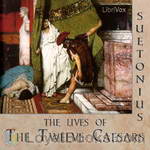 The Lives of the Twelve Caesars
The Lives of the Twelve Caesars
The Twelve Caesars is a set of twelve biographies of Julius Caesar and the first 11 emperors of the Roman Empire. The work was written in 121 during the reign of the emperor Hadrian, while Suetonius was Hadrian’s personal secretary. On the Life of the Caesars concentrates on the acts and personalities of the Julio-Claudians and their immediate successors. Together with Tacitus’ Annals, this work is a major source for the historical details in Robert Graves’ novels “I Claudius” and “Claudius the God”. | |
By: Gaston Maspero (1846-1916) | |
|---|---|
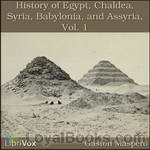 History Of Egypt, Chaldea, Syria, Babylonia, and Assyria
History Of Egypt, Chaldea, Syria, Babylonia, and Assyria
History Of Egypt, Chaldæa, Syria, Babylonia, and Assyria is the masterwork of one of the fathers of modern egyptology. This work, in twelve volumes, was translated from the French original, “Histoire ancienne des peuples de l’Orient classique” and published in 1903-1904. Maspero was a largely self-taught master of hieroglyphic translation. In November 1880, he was placed at the head of a French archeological mission, which developed later into the Institut Français d’Archéologie Orientale... | |
 Manual of Egyptian Archaeology and Guide to the Study of Antiquities in Egypt
Manual of Egyptian Archaeology and Guide to the Study of Antiquities in Egypt
A handbook of Egyptian archaeology, issued by the British Museum, considered suitable for British tourists travelling to Egypt in the 19th Century. (Introduction by Timothy Ferguson) | |
By: Gen. George A. Custer (1839-1876) | |
|---|---|
 My Life on the Plains
My Life on the Plains
George Armstrong Custer (December 5, 1839 – June 25, 1876), one of the most mythologized figures in American history, was an United States Army officer and cavalry commander in the American Civil War and the Indian Wars. He eventually met his fate in the battle of Little Big Horn in one of the most notable defeats of American armed forces.My Life on the Plains is an autobiographical first-hand account of the Indian Wars of 1867-1869, detailing the winter campaign of 1868 in which Custer led the 7th US cavalry against the Cheyenne Indians... | |
By: General Sir John Miller Adye (1819-1900) | |
|---|---|
 Indian Frontier Policy, an Historical Sketch
Indian Frontier Policy, an Historical Sketch
“The subject of our policy on the North-West frontier of India is one of great importance, as affecting the general welfare of our Eastern Empire, and is specially interesting at the present time, when military operations on a considerable scale are being conducted against a combination of the independent tribes along the frontier. It must be understood that the present condition of affairs is no mere sudden outbreak on the part of our turbulent neighbours. Its causes lie far deeper, and are the consequences of events in bygone years”. (From the author’s Preface, 1897). | |
By: Geoffrey Chaucer | |
|---|---|
 Chaucer Storybook
Chaucer Storybook
Geoffrey Chaucer's classic "Canterbury Tales" has here been rendered into clear and contemporary English prose. These classic stories are now available to those who would like to read them without struggling through Middle English poetry. The character and humour of The Wife of Bath and other larger-than-life people created by Chaucer are now accessible to a wider audience, including children. Please note that the original Canterbury Tales includes 24 stories, of which 11 are reproduced here. - Summary by Beth Thomas | |
By: Geoffrey H. Malins (1887-1943) | |
|---|---|
 How I Filmed the War
How I Filmed the War
An account of World War I and the experience of filming it by an early cinematographer (and, after the war, successful director) who was there. | |
By: Georg Ebers (1837-1898) | |
|---|---|
 Arachne
Arachne
Ledscha, living in ancient Egypt, has lost her betrothed and all hope of love. But the gods see otherwise. She now loves a Greek sculptor, who only wanted her for a model, but even that will not happen. She has been replaced by another woman for the statue of Arachne. Who do the gods see her with? Is it the Greek, or someone else? This work is the last written and published in German by Georg Ebers before he died in 1898. He wrote many novels set it ancient Egypt, which sparked the general interest in and popularity of Egyptology that still thrives today. This book was translated into English also in 1898. | |
 Joshua
Joshua
Hosea is a commander in Pharaoh's army... and a Hebrew. As he returns home from war, he finds that there has been a great pestilence in Egypt and his people are being blamed for it. Hosea receives a message from his father to follow his people to Succoth, but he is hesitant to give up his position in the army. Someone else also sends a message, containing a new name for him from God. There is much intrigue in this retelling of the Exodus, both among the Hebrews and in the court of Pharaoh. | |
By: Georg Wilhelm Friedrich Hegel (1770-1831) | |
|---|---|
 Introduction to The Philosophy of History
Introduction to The Philosophy of History
The introduction to Hegel’s lectures on the philosophy of world history is often used to introduce students to Hegel’s philosophy, in part because Hegel’s sometimes difficult style is muted in the lectures, and he discourses on accessible themes such as world events in order to explain his philosophy. Much of the work is spent defining and characterizing Geist or spirit. Geist is similar to the culture of people, and is constantly reworking itself to keep up with the changes of society, while at the same time working to produce those changes through what Hegel called the “cunning of reason”... | |
By: George A. Miller (1868-1961) | |
|---|---|
 Prowling About Panama
Prowling About Panama
In 1903, Panama became a brand new state in Central America by seceding from Colombia in order to facilitate the construction of the Panama Canal, which was finished in 1914. This fledgling nation was home to the oldest inhabited European settlement on the American continent, a rich indigenous culture, and a splendid natural beauty from coast to jungle. Such was the scene as found by George A. Miller as he was "Prowling about Panama" in 1919, an activity that is more a "getting lost in the right way" than systematic exploration. Follow the author on his prowls through an amazing country that at the time of writing was an exciting mixture of tradition and modernity. . | |
By: George Alfred Henty | |
|---|---|
 The Cat of Bubastes
The Cat of Bubastes
G.A. Henty’s “tale of ancient Egypt” tells the story of Amuba, prince of the Rebu, who is taken captive when his people are conquered by the Egyptians, and then becomes the servant and companion of Chebron, son of the high priest of Osiris. A mystery unfolds as the lads find evidence of a murderous conspiracy within the ranks of the priesthood; but they must then flee for their lives when they unintentionally kill the cat selected as the successor to the Cat of Bubastes, one of the most sacred animals of Egypt. Amuba and Chebron are strong, courageous, and resourceful – but will this be enough to carry them beyond the long reach of the power of Egypt? | |
 The Dragon and the Raven
The Dragon and the Raven
During the reign of King Alfred, Danish forces have invaded the English countryside. Although the English try to repulse these attacks, they are overrun by the savagery and sheer numbers of the Danes.One of those deeply touched by these attacks is young Edmund. As a boy, he watched as his father was slain in battle fighting the Danes. Although young, he was intelligent, and noted the mistakes made on the battlefield. As he grew into a man, he put that knowledge into use and created a uniquely trained group of soldiers and built a new, stronger ship called the Dragon... | |
 St. Bartholomew's Eve
St. Bartholomew's Eve
Set in the days of the religious wars of Europe, St. Bartholomew’s Eve is the tale of the Huguenot’s desperate fight for freedom of worship in France. As the struggle intensifies the plot thickens, culminating in the dreadful Massacre of St. Bartholomew’s Eve. Henty, “The Boy’s Own Storyteller” weaves the life and adventures of Philip Fletcher and his cousin, Francois DeLaville, into the historical background with thrilling battles, sieges and escapes along the way (not to mention a fair damsel in distress!). | |
 The Tiger of Mysore
The Tiger of Mysore
During the Indian war with Tippoo Saib, 15 year old Dick Holland and his mother set out from England to find and rescue his father, shipwrecked 6 years earlier, and believed to be held prisoner by the 'Tiger of Mysore'. | |
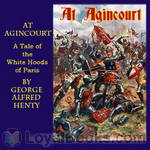 At Agincourt - White Hoods of Paris
At Agincourt - White Hoods of Paris
The story begins in a grim feudal castle in Normandie. The times were troublous, and soon the king compelled Lady Margaret de Villeroy, with her children, to go to Paris as hostages. Guy Aylmer went with her.Paris was turbulent. Soon the guild of the butchers, adopting white hoods as their uniform, seized the city, and besieged the house where our hero and his charges lived. After desperate fighting, the white hoods were beaten and our hero and his charges escaped from the city, and from France. (Summary from the original back cover) | |
 St George for England
St George for England
A tale set in England in the time of Cressy and Pointiers. A child of noble birth whose parents have fallen foul of the current royalty is taken by his dying mother and placed in hiding. He grows up with a bowyer and then apprenticed to an armourer just outside the gates of the City of London, becomes accomplished in arms and joins the campaign in France.A tale of heroism and 14th century viciousness. Great fun. | |
 By Pike and Dyke
By Pike and Dyke
It is the 1570's, and the people of the Netherlands live in terror under the cruel dominion of Spain. Though many long to be free of Spanish tyranny, efforts at rebellion are failing, and allies are nowhere to be found. Edward “Ned” Martin, son of an English captain and a Dutch lady, is thrust into the conflict when he resolves to help his mother’s people and avenge his murdered relatives. Entering the service of the revolutionary leader William the Silent, Prince of Orange, Ned is called upon to carry out dangerous secret missions deep within occupied territory... | |
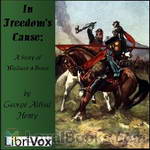 In Freedom's Cause
In Freedom's Cause
Another stirring tale from the master of historical fiction set in the time of Robert Bruce and William Wallace and their struggle for Scotland's independence. | |
 Beric the Briton - A Story of the Roman Invasion
Beric the Briton - A Story of the Roman Invasion
My series of stories dealing with the wars of England would be altogether incomplete did it not include the period when the Romans were the masters of the country. The valour with which the natives of this island defended themselves was acknowledged by the Roman historians, and it was only the superior discipline of the invaders that enabled them finally to triumph over the bravery and the superior physical strength of the Britons. The Roman conquest for the time was undoubtedly of immense advantage to the people -- who had previously wasted their energies in perpetual tribal wars -- as it introduced among them the civilization of Rome... | |
 With Frederick The Great: A Story of the Seven Years' War
With Frederick The Great: A Story of the Seven Years' War
Among the great wars of history there are few, if any, instances of so long and successfully sustained a struggle, against enormous odds, as that of the Seven Years' War, maintained by Prussia--then a small and comparatively insignificant kingdom--against Russia, Austria, and France simultaneously, who were aided also by the forces of most of the minor principalities of Germany. The population of Prussia was not more than five millions, while that of the Allies considerably exceeded a hundred millions... | |
 With Clive in India
With Clive in India
With Clive in India gives a vivid picture of the wonderful events of the ten years, which at their commencement saw Madras in the hands of the French--Calcutta at the mercy of the Nabob of Bengal--and English influence apparently at the point of extinction in India--and which ended in the final triumph of the English, both in Bengal and Madras. There were yet great battles to be fought, great efforts to be made, before the vast Empire of India fell altogether into British hands; but these were but the sequel of the events described. | |
 Young Carthaginian
Young Carthaginian
Typically, Henty's heroes are boys of pluck in troubled times, and this is no different. Detailed research is embellished with a vivid imagination, especially in this novel set in the Punic wars, about which knowledge is limited: "...certainly we had but a hazy idea as to the merits of the struggle and knew but little of its events, for the Latin and Greek authors, which serve as the ordinary textbooks in schools, do not treat of the Punic wars. That it was a struggle for empire at first, and latterly... | |
 With Lee in Virginia
With Lee in Virginia
Vincent Wingfield is the son of a wealthy Virginian planter. When the country goes to war, he enlists in the cavalry, and sees action under the various generals commanding the army in and near Virginia. He has several private adventures as well, including a personal enemy, prison escape, rescue of a young lady, spying expedition, and recovery of a stolen slave. He rises in rank in the Confederate army, and after the war is over, he marries and returns home to manage his mother's plantation. Henty in this book gives an overview of the causes of the Civil War, and follows the battles and movements of the army in Virginia and the surrounding area... | |
 Under Drake's Flag: A Tale Of The Spanish Main
Under Drake's Flag: A Tale Of The Spanish Main
An exciting tale set on the high seas, in a period ruled by exploration, with the ever-present dangers of nature and the weather, together with pirates of the famed Spanish Main. | |
 In the Reign of Terror: The Adventures of a Westminster Boy
In the Reign of Terror: The Adventures of a Westminster Boy
Like all Henty books, this one centers around a young English lad whose courtesy and courage win the day. Harry Sandwith travels to France to serve a French Marquis, despite the rumblings of a revolution. Follow along to benefit from a wholesome story full of historical facts in good, old Henty fashion. (Introduction by Jenn Raimundo) | |
By: George B. Grinnell | |
|---|---|
 Blackfeet Indian Stories
Blackfeet Indian Stories
The Blackfeet were hunters, travelling from place to place on foot. They used implements of stone, wood, or bone, wore clothing made of skins, and lived in tents covered by hides. Dogs, their only tame animals, were used as beasts of burden to carry small packs and drag light loads. The stories here told come down to us from very ancient times. Grandfathers have told them to their grandchildren, and these again to their grandchildren, and so from mouth to mouth, through many generations, they have reached our time. (Sibella Denton) | |
By: George Berkeley (1685-1753) | |
|---|---|
 A Treatise Concerning the Principles of Human Knowledge
A Treatise Concerning the Principles of Human Knowledge
A Treatise Concerning the Principles of Human Knowledge, Part 1 (Commonly called “Treatise” when referring to Berkeley’s works) is a 1710 work by the Irish Empiricist philosopher George Berkeley. It largely seeks to refute the claims made by his contemporary John Locke about the nature of human perception. Both Locke and Berkeley agreed that there was an outside world, and it was this world which caused the ideas one has within one’s mind. Berkeley sought to prove that the outside world was also composed solely of ideas, suggesting that “Ideas can only resemble Ideas”... | |
By: George Bethune English (1787-1828) | |
|---|---|
 A Narrative of the Expedition to Dongola and Sennaar
A Narrative of the Expedition to Dongola and Sennaar
As a second lieutenant in the United States Marine Corps during the War of 1812 assigned to Marine Corps headquarters, English sailed to the Mediterranean, and was among the first citizens of the United States known to have visited Egypt. Shortly after arriving in Egypt he resigned his commission, converted to Islam and joined Isma'il Pasha in an expedition up the Nile River against Sennar in 1820, winning distinction as an officer of artillery. He published his Narrative of the Expedition to Dongola and Sennaar (London 1822) regarding his exploits. (Introduction adapted by obform from Wikipedia) | |
By: George Broke (1861-1932) | |
|---|---|
 With Sack and Stock in Alaska
With Sack and Stock in Alaska
In 1888, George Broke with Harold Topham and William Williams, made the first exploration of the Alaskan Mt. St. Elias range, including the crossing of the great Malaspina Glacier and an attempt on the S.E. face of Mt. St. Elias itself. The journey is described in the interesting work With Sack and Stock in Alaska, vividly detailing the country visited and the characters met along the way. - Summary by Fritz | |
By: George Cooreman (1852-1926) | |
|---|---|
 Martyrdom Of Belgium; Official Report Of Massacres Of Peaceable Citizens, Women And Children By The German Army; Testimony Of Eye-Witnesses
Martyrdom Of Belgium; Official Report Of Massacres Of Peaceable Citizens, Women And Children By The German Army; Testimony Of Eye-Witnesses
The title says it all. World War I narratives of German activities in Belgium after the German invasion of this neutral country. - Summary by david wales | |
By: George Davis | |
|---|---|
 Frostiana: or a history of the River Thames in a frozen state
Frostiana: or a history of the River Thames in a frozen state
The frost fair of 1814 began on 1 February, and lasted four days. A printer named George Davis published a 124-page book, "Frostiana; or a History of the River Thames in a Frozen State". The entire book was type-set and printed in Davis's printing stall, which had been set up on the frozen Thames. The book is a written history of London's frost fairs, interspersed with humorous, cold-related sections including "How to Make Ice Cream" and "The Art of Ice Skating". - Summary by Wikipedia, Lewis Fletcher | |
By: George Dunderdale (1822-1903) | |
|---|---|
 The Book of the Bush
The Book of the Bush
While the world was young, nations could be founded peaceably. There was plenty of unoccupied country, and when two neighbouring patriarchs found their flocks were becoming too numerous for the pasture, one said to the other: "Let there be no quarrel, I pray, between thee and me; the whole earth is between us, and the land is watered as the garden of Paradise. If thou wilt go to the east, I will go to the west; or if thou wilt go to the west, I will go to the east." So they parted in peace.(excerpt from book) | |
By: George Edmundson (1848-1930) | |
|---|---|
 History of Holland
History of Holland
The title, “History of Holland,” given to this volume is fully justified by the predominant part which the great maritime province of Holland took in the War of Independence and throughout the whole of the subsequent history of the Dutch state and people. | |
By: George Eliot (1819-1880) | |
|---|---|
 Adam Bede
Adam Bede
A young carpenter falls in love with the village beauty. She, however, has set her sights on a dashing army captain who's the son of the wealthy local squire. Meanwhile, a beautiful and virtuous young woman preacher arrives in the village. What happens to these people and the strange twists and turns that their lives take are described in the rest of the book. Adam Bede was George Eliot's first published novel. Published in 1859, the book has remained a firm favorite with readers and academicians alike and is still taught in many English literature courses all over the world... | |
 The Mill on the Floss
The Mill on the Floss
The novel details the lives of Tom and Maggie Tulliver, a brother and sister growing up on the river Floss near the village of St. Oggs, evidently in the 1820’s, after the Napoleonic Wars but prior to the first Reform Bill (1832). The novel spans a period of 10-15 years, from Tom and Maggie’s childhood up until their deaths in a flood on the Floss. The book is fictional autobiography in part, reflecting the disgrace that George Eliot (Mary Ann Evans) herself had while in a lengthy relationship with a married man, George Henry Lewes... | |
By: George Hamilton | |
|---|---|
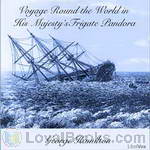 Voyage Round the World in His Majesty's Frigate Pandora
Voyage Round the World in His Majesty's Frigate Pandora
George Hamilton was the surgeon assigned to the frigate Pandora. The British Admiralty ordered the ship to the Pacific to arrest the Bounty mutineers and bring them back to England for trial. The commander, Captain Edward Edwards, also was ordered to chart the passage between Australia and New Guinea. While Edwards managed to arrest the mutineers still on Tahiti, he sank the Pandora on a reef near Australia. Hamilton tells this story and also the story of the crew’s fate after the Pandora sank. | |
By: George Henry Wakeling (1859-1936) | |
|---|---|
 King and Parliament (A.D. 1603-1714)
King and Parliament (A.D. 1603-1714)
This slim volume by the Oxford University lecturer, George Henry Wakeling, deals with the period in British history from the reign of King James I through the death of Queen Anne. The story begins with England, transformed by the Protestant Reformation and keen to confront Catholic Spain, but burdened by a monarch unequal to national ambitions. Wakeling portrays the subsequent battles for dominance between the contending Protestant sects and chronicles the struggle for sovereignty between the British Crown and the emerging power of Parliament. - Summary by Pamela Nagami | |
By: George Hooper (1824-1890) | |
|---|---|
 Wellington
Wellington
Arthur Wellesley, 1st Duke of Wellington, , was born in Dublin, the younger son of an Irish Protestant aristocrat. He served with his brother in India and rose to prominence during the Napoleonic Wars in the Peninsular Campaign. As a youth, his mother saw little promise in him, but Wellesley was an early riser and a hard worker, inured to the harsh life of the army camp, and conscientious in his knowledge of terrain and of defensive tactics. He famously commanded the allied forces at the final defeat of Napoleon at Waterloo, but the two men never actually met... | |
By: George L. Apperson (1857-1937) | |
|---|---|
 The Social History of Smoking
The Social History of Smoking
This work tells the history of smoking in England from the social point of view. Thus it does not deal with the history of tobacco growing or tobacco related manufacture, but is rather the story of how smoking has fitted in with the fashions and customs throughout the ages, and the changes in the attitude of society towards smoking. | |
By: George Morang (1866-1937) | |
|---|---|
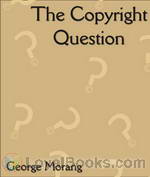 The Copyright Question
The Copyright Question
This is a letter to the Toronto Board of Trade regarding Canadian copyrights. Morang requested an appearance before the Toronto Board of Trade but was denied. This is his letter in response. He wished to make clear his position. | |
By: George Payne Rainsford James (1799-1860) | |
|---|---|
 Forest Days: A Romance of Old Times
Forest Days: A Romance of Old Times
Picture a tranquil English village, with an inn on the green. A lone patron enjoys his wine and teasing the landlord's pretty daughter, when suddenly they are rudely interrupted by a local aristocrat and his two henchmen. These same three reappear the following day to disrupt the May Day celebrations.Suddenly, a group of men in Lincoln green appear to save the day. But who are they? This is a different take on the tale of Robin Hood, placing him in the time of Henry III, rather than the more traditional reign of Richard I... | |
By: George Pearson | |
|---|---|
 The Escape of a Princess Pat
The Escape of a Princess Pat
Being the full account of the capture and fifteen months’ imprisonment of Corporal Edwards, of the Princess Patricia’s Canadian Light Infantry, and his final escape from Germany into Holland. | |
By: George Raffalovich (1880-1958) | |
|---|---|
 Ukraine
Ukraine
“We are not the same nation with Russian people,” the statement which all Ukrainians wish to convey to the whole world for centuries. The striving for freedom and independence is what these people shed much of their blood on Ukrainian lands for. “The Ukraine” by Bedwin Sands describes Ukrainian problem, which exacerbated in the late 19th and early 20th centuries, by looking back at the Ukrainian history, the development of Ukrainian literature and its influence, and by considering its relations with Austria and Russia. | |
By: George William Cox (1827-1902) | |
|---|---|
 Crusades
Crusades
The Crusades were a series of religious wars fought between 1096 and 1272 to recover the Holy Land from Islamic rule. According to the Latin Church, Crusaders were penitent pilgrims whose sins were forgiven. British historian, George Cox, writes of the churchmen, great and small, who inspired the Crusades, of the warriors who left families and lands behind, of the wily Venetian merchants and Byzantine emperors who exploited the knights, and of the valor of the Saracens. Here are accounts of sublime sacrifice and bestial ferocity, of dynastic conflict within the Crusader States, of sieges, starvation, pestilence, and ambush, and of the clash and interpenetration of two cultures... | |
By: George-Günther Freiherr von Forstner (1882-1940) | |
|---|---|
 The Journal of Submarine Commander Von Forstner
The Journal of Submarine Commander Von Forstner
The Journal of Submarine Commander Von Forstner is a graphic account of WWI submarine warfare. Forstner was the commander of German U-boat U-28. His journal, first published 1916, gives a gritty picture of daily life inside a submarine and details several torpedo attacks on Allied shipping. The 1917 translation of Forstner’s journal into English was unquestionably intended to bolster the Allied war effort. In the foreword, the translator states: “Nothing at the present day has aroused such fear as this invisible enemy, nor has anything outraged the civilized world like the tragedies caused by the German submarines... | |
By: Geronimo (1829-1909) | |
|---|---|
 Geronimo’s Story of His Life
Geronimo’s Story of His Life
Geronimo’s Story of His Life is the oral life history of a legendary Apache warrior. Composed in 1905, while Geronimo was being held as a U.S. prisoner of war at Fort Sill, Oklahoma, Geronimo’s story found audience and publication through the efforts of S. M. Barrett--Lawton, Oklahoma, Superintendent of Education, who wrote in his preface that “the initial idea of the compilation of this work was . . . to extend to Geronimo as a prisoner of war the courtesy due any captive, i.e. the right to state the causes which impelled him in his opposition to our civilization and laws... | |
By: Gertrude Atherton (1857-1948) | |
|---|---|
 Rezanov
Rezanov
This novel by the prolific Californian author Gertrude Horn Atherton is based on the real life story of Nikolai Rezanov, a man who, in 1806, pushed for the Russian colonization of Alaska and California. "Not twenty pages have you turned before you know this Rezanov, privy councilor, grand chamberlain, plenipotentiary of the Russo-American company, imperial inspector of the extreme eastern and northwestern dominions of his imperial majesty Alexander the First, emperor of Russia—all this and more, a man... | |
By: Gertrude Bell (1868-1926) | |
|---|---|
 Syria: the Desert and the Sown
Syria: the Desert and the Sown
Gertrude Bell's Syria: The Desert and the Sown describes her travels in the Levant during the first years of the 20th century. In this vivid and painstakingly documented narrative, Bell recounts her visits to Damascus, Jerusalem, Beirut, Antioch and Alexandretta, as well as the time she spent in the deserts of the region. Fluent in Arabic and several other languages, Bell brings to her account a level of insight beyond the reach of an average travel writer. She would later go on to play a highly influential role in the politics of the Middle East, drawing on the knowledge and personal connections she built up during these and other travels... | |